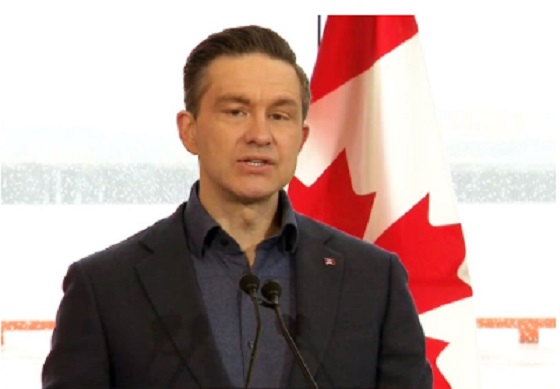Alberta
Fans of Flames and Oilers go to familiar response: “Fire the Coach!”

Officially, the National Hockey League season is over for the only two teams this province really cares about. While survivors prepare for action in Round Two of the Stanley Cup playoffs, both the Edmonton Oilers and the Calgary Flames are setting up what should be fascinating games of chop and change.
The final on-ice breath for 2020 took place after the Dallas Stars humbled Calgary 7-3 to win their best-of-seven series in six games. Days earlier, the Edmonton Oilers were outworked and outscored in a five-game loss to the Chicago Black Hawks.
Promptly, supporters of both teams fell to the oldest response in the Dedicated Fan yearbook: fire the coach.
Dave Tippett was singled out because he juggled some lines. Truly, his Oilers were not good enough at forward, on defence or in goal. Interim Flames head coach Geoff Ward drew immediate criticism on Thursday for replacing Cam Talbot with an ice-cold David Rittich in the early stages of the Stars’ record-setting offensive burst following their early 3-0 deficit. Talbot gave up three goals on only eight shots, but Ritich’s immediate performance was even worse.
Before the sixth and decisive game, Ward expressed optimism about his team’s future. “This is more relentless, more prepared, a better team” than the group that faded badly as a playoff top seed a year ago, he said. Well, for the first 20 minutes, he was absolutely correct. Fan frustration will not force any changes behind the bench. On the ice is entirely different. Goaltending, for example, is a serious concern in both centres.
Edmonton’s pair, Mikko Koskinen and Mike Smith are 32 and 38, respectively. At the very least, a reliable young netminder is required. Talbot, widely inconsistent before being traded to Calgary for Koskinen two years ago, shone through most of the playoffs for the Flames this season and drew solid support from teammates Sean Monahan and Mikael Backlund after Thursday’s shoddy start.
Monahan’s generous view did not detract from the likelihood that the veteran winger, in common with linemate Johnny Gaudreau, is sure to be prominent in trade talks, starting almost immediately.
Captain and key defenceman Mark Giordano, 35, finally showed signs of age. Partner T.J. Brodie, 29, would attract serious offers if general manager Brad Treliving put him on the market.
Good news for Calgary is that on-ice leader Matt Tkachuk has shown no sign of abandoning his fiery style. He was sadly missed after suffering an apparent concussion in Game Two. The seasoned Backlund, and youngsters Andrew Mangiapane, Dillon Dube and Sam Bennett are set for solid futures up front.
In Edmonton, the question about offence is simple: who will play with Connor McDavid on one line and Leon Draisaitl on another? Third- and fourth-liners on the 2020 roster will have plenty of company looking for jobs next year.
At this point, Edmonton lags behind its provincial rivals in at least one important area. It must be remembered that the Flames won their so-called elimination round by defeating a strong (but injured) group of Winnipeg Jets. The Oilers, who would mortgage the future of the entire Icer District for a brilliant young defender such as Miro Heiskanen of Dallas, Cale Makar of Colorado or Quinn Hughes of Vancouver (all still active in playoffs) have no such victory as a building block at this point.
Alberta
Alberta takes big step towards shorter wait times and higher quality health care

From the Fraser Institute
On Monday, the Smith government announced that beginning next year it will change the way it funds surgeries in Alberta. This is a big step towards unlocking the ability of Alberta’s health-care system to provide more, better and faster services for the same or possibly fewer dollars.
To understand the significance of this change, you must understand the consequences of the current (and outdated) approach.
Currently, the Alberta government pays a lump sum of money to hospitals each year. Consequently, hospitals perceive patients as a drain on their budgets. From the hospital’s perspective, there’s little financial incentive to serve more patients, operate more efficiently and provide superior quality services.
Consider what would happen if your local grocery store received a giant bag of money each year to feed people. The number of items would quickly decline to whatever was most convenient for the store to provide. (Have a favourite cereal? Too bad.) Store hours would become less convenient for customers, alongside a general decline in overall service. This type of grocery store, like an Alberta hospital, is actually financially better off (that is, it saves money) if you go elsewhere.
The Smith government plans to flip this entire system on its head, to the benefit of patients and taxpayers. Instead of handing out bags of money each year to providers, the new system—known as “activity-based funding”—will pay health-care providers for each patient they treat, based on the patient’s particular condition and important factors that may add complexity or cost to their care.
This turns patients from a drain on budgets into a source of additional revenue. The result, as has been demonstrated in other universal health-care systems worldwide, is more services delivered using existing health-care infrastructure, lower wait times, improved quality of care, improved access to medical technologies, and less waste.
In other words, Albertans will receive far better value from their health-care system, which is currently among the most expensive in the world. And relief can’t come soon enough—for example, last year in Alberta the median wait time for orthopedic surgeries including hip and knee replacements was 66.8 weeks.
The naysayers argue this approach will undermine the province’s universal system and hurt patients. But by allowing a spectrum of providers to compete for the delivery of quality care, Alberta will follow the lead of other more successful universal health-care systems in countries such as Australia, Germany, the Netherlands and Switzerland and create greater accountability for hospitals and other health-care providers. Taxpayers will get a much better picture of what they’re paying for and how much they pay.
Again, Alberta is not exploring an untested policy. Almost every other developed country with universal health care uses some form of “activity-based funding” for hospital and surgical care. And remember, we already spend more on health care than our counterparts in nearly all of these countries yet endure longer wait times and poorer access to services generally, in part because of how we pay for surgical care.
While the devil is always in the details, and while it’s still possible for the Alberta government to get this wrong, Monday’s announcement is a big step in the right direction. A funding model that puts patients first will get Albertans more of the high-quality health care they already pay for in a timelier fashion. And provide to other provinces an example of bold health-care reform.
Alberta
Alberta’s embrace of activity-based funding is great news for patients

 From the Montreal Economic Institute
From the Montreal Economic Institute
Alberta’s move to fund acute care services through activity-based funding follows best practices internationally, points out an MEI researcher following an announcement made by Premier Danielle Smith earlier today.
“For too long, the way hospitals were funded in Alberta incentivized treating fewer patients, contributing to our long wait times,” explains Krystle Wittevrongel, director of research at the MEI. “International experience has shown that, with the proper funding models in place, health systems become more efficient to the benefit of patients.”
Currently, Alberta’s hospitals are financed under a system called “global budgeting.” This involves allocating a pre-set amount of funding to pay for a specific number of services based on previous years’ budgets.
Under the government’s newly proposed funding system, hospitals receive a fixed payment for each treatment delivered.
An Economic Note published by the MEI last year showed that Quebec’s gradual adoption of activity-based funding led to higher productivity and lower costs in the province’s health system.
Notably, the province observed that the per-procedure cost of MRIs fell by four per cent as the number of procedures performed increased by 22 per cent.
In the radiology and oncology sector, it observed productivity increases of 26 per cent while procedure costs decreased by seven per cent.
“Being able to perform more surgeries, at lower costs, and within shorter timelines is exactly what Alberta’s patients need, and Premier Smith understands that,” continued Mrs. Wittevrongel. “Today’s announcement is a good first step, and we look forward to seeing a successful roll-out once appropriate funding levels per procedure are set.”
The governments expects to roll-out this new funding model for select procedures starting in 2026.
* * *
The MEI is an independent public policy think tank with offices in Montreal, Ottawa, and Calgary. Through its publications, media appearances, and advisory services to policymakers, the MEI stimulates public policy debate and reforms based on sound economics and entrepreneurship.
-

 2025 Federal Election2 days ago
2025 Federal Election2 days agoPoilievre Will Bring in ‘One and Done’ Resource Approvals, and Ten Specific Projects Including LNG Canada Phase II
-

 2025 Federal Election2 days ago
2025 Federal Election2 days agoElection Security Briefing Confirms CCP-Linked Operation Boosted Carney
-

 conflict2 days ago
conflict2 days agoZelensky Alleges Chinese Nationals Fighting for Russia, Calls for Global Response
-

 2025 Federal Election2 days ago
2025 Federal Election2 days agoHarper Endorses Poilievre at Historic Edmonton Rally: “This Crisis Was Made in Canada”
-

 John Stossel23 hours ago
John Stossel23 hours agoGovernment Gambling Hypocrisy: Bad Odds and No Competition
-

 Bruce Dowbiggin2 days ago
Bruce Dowbiggin2 days agoBettman Gives Rogers Keys To The Empire. Nothing Will Change
-

 2025 Federal Election2 days ago
2025 Federal Election2 days agoAn In-Depth Campaign Trail “Interview” With Pierre Poilievre
-

 Alberta23 hours ago
Alberta23 hours agoAlberta’s embrace of activity-based funding is great news for patients










